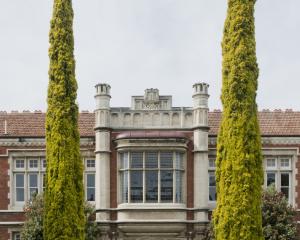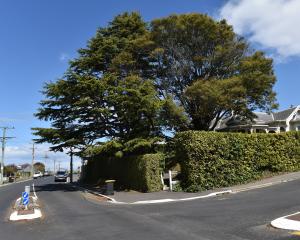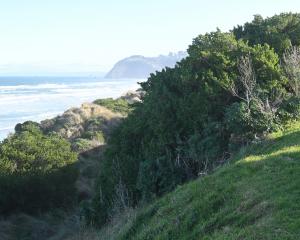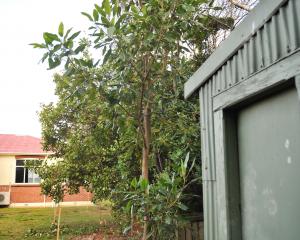

Many of us would say that’s where we’ve always belonged. Maybe local councils and tourist outfits should run with the idea.
More to the point for this article, the world map on the UN flag and logo is flanked by two branches of an olive tree (Olea europaea), which gives its name to the plant family that includes ash trees, lilac, privet, Forsythia, Osmanthus and jasmine.
When I was a boy, olive oil (spelt Olive Oyl) was Popeye’s girlfriend - not something you used in the kitchen.
What a difference half a century can make! Spurred on by TV cooking shows, lots of us regularly slosh olive oil into our frying pans and salads with gusto (not to mention pesto and antipasto).
Many thousands of Kiwis have discovered and embraced the delights of the various Mediterranean cuisines, with olive oil as their essential common denominator.

Most of us can easily grow olive trees. It’s surprising how many are thriving in the suburban gardens of Dunedin. Two of the oldest I’ve seen frame the entrance to the Memorial Gardens in Green Island.
Three younger olive trees outside the Montecillo Veterans Home at 63 Bay View Rd, St Kilda, are a poignant reminder of the struggles and sacrifices made by New Zealanders in Greece and Crete during World War 2.
The tallest ones I’ve seen grow in a front garden on Forbury Rd near the St Clair Esplanade.
Most eye-catching of all, though, is the avenue of olive trees lining the driveway of Corstorphine House at 23A Milburn St, Corstorphine. If you half close your eyes and look down the driveway on a sunny day, you can immerse yourself in the silvery shimmer of an olive grove for a few seconds. That distinctive "washed by moonlight" look comes from the whitish undersides of the leaves. The tops of the leaves are surprisingly dark green, like the leaves of many other Mediterranean trees.
As those of us on the coast know only too well, growing fruit trees is one thing but ripening the fruit on them is another. Do any of the olive trees in Dunedin yield any useful olives? I don’t know, but it would be interesting to find out.
I do know that a few patient growers have succeeded in Central Otago. For instance, Cairnmuir Olives, near Bannockburn, has won awards for its extra virgin olive oil. As former ODT features writer Charmian Smith wrote a few years ago: "Central Otago oils tend to be green, grassy and pungently peppery, savoury rather than mild and sweet as is typical of riper northern oils."
Olive trees have an understated, subtle beauty rather than the in-your-face glamour of rhododendrons and cherry blossom trees. Instead of showy flowers and vivid autumn hues, you get an airy canopy of silvery leaves, unassuming green or purplish fruit, and evocatively gnarled trunks as the trees age.
It’s fair to say lots of trees have more beautiful flowers, more impressive leaves, more delicious fruit, more useful wood, greater height and greater girth than the humble olive tree. But how many of them can match its profound symbolism? The "wheels" of Western civilisation were liberally lubricated by olive oil via the ancient Greeks and Romans; and the holy books of Christianity, Judaism and Islam all give the olive a spiritual significance that transcends its uses in the home.
Let’s be thankful that we can grow them here to remind us of all these things.













